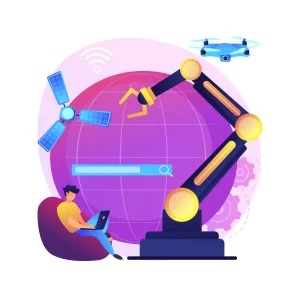1. The Rise of Electric Vehicles (EVs)
a. Growing Popularity
Electric vehicles are no longer a niche product; they are becoming mainstream. With increasing concerns over climate change, governments, manufacturers, and consumers are embracing EVs as a cleaner alternative to traditional cars.
b. Advancements in Technology
- Battery Technology: Improvements in lithium-ion batteries have reduced costs and extended driving ranges, making EVs more practical.
- Charging Infrastructure: Rapid expansion of charging networks is eliminating range anxiety, one of the primary barriers to EV adoption.
- AI and Connectivity: EVs are integrating advanced features like autonomous driving, smart navigation, and vehicle-to-grid (V2G) technology.
c. Policy Support
Governments worldwide are offering incentives such as tax credits, subsidies, and grants to accelerate EV adoption. Several countries, including the UK, France, and Norway, have announced plans to phase out sales of new ICE vehicles within the next two decades.
2. The Challenges Facing Electric Vehicles
a. High Initial Costs
Despite declining battery costs, EVs remain more expensive upfront than ICE cars, although lower operating and maintenance costs balance this over time.
b. Infrastructure Gaps
Charging infrastructure is expanding, but rural and underdeveloped areas often lack adequate facilities, slowing widespread adoption.
c. Supply Chain Concerns
The production of EV batteries relies on critical minerals like lithium, cobalt, and nickel, raising concerns about sustainability, geopolitical tensions, and environmental impact.
3. The Uncertain Future of Traditional Cars
a. Declining Demand
With the global shift toward sustainability, demand for traditional ICE cars is expected to decrease significantly, particularly in markets with stringent emission regulations.
b. Innovation in ICE Technology
Some manufacturers are exploring hybrid models and synthetic fuels to extend the relevance of ICE cars, focusing on reducing emissions without fully transitioning to EVs.
c. Market Dynamics
While traditional cars still dominate in developing regions with limited EV infrastructure, their market share is shrinking in developed economies.
4. Key Trends Shaping the Automotive Industry
a. Electrification
Manufacturers are making bold commitments to electrify their fleets. For example:
- General Motors (GM): Plans to phase out gasoline-powered vehicles by 2035.
- Volkswagen: Targets 70% of its sales to be EVs by 2030.
b. Autonomous Vehicles
The rise of autonomous driving technology, often integrated with EVs, is transforming how people view transportation.
c. Shared Mobility
Electric shared mobility services like e-scooters, e-bikes, and EV ride-sharing are reshaping urban transportation.
5. The Environmental Perspective
a. EVs and Carbon Emissions
While EVs produce no tailpipe emissions, their environmental impact depends on the electricity mix used for charging. Transitioning to renewable energy is critical for maximizing their sustainability.
b. Lifecycle Analysis
The production of EV batteries has a higher environmental footprint than ICE cars, but EVs offset this through lower emissions over their lifetime.
c. End-of-Life Recycling
Advancements in battery recycling technologies are essential to reduce waste and improve the sustainability of EVs.
6. The Road Ahead
For Electric Cars:
- Continued innovation in battery technology and charging infrastructure will make EVs more accessible.
- Governments and corporations will invest heavily in renewable energy to support sustainable charging networks.
- EVs are poised to dominate urban and developed markets within the next decade.
For Traditional Cars:
- ICE vehicles will remain relevant in regions with limited EV infrastructure or weak regulatory frameworks.
- Hybrid models and alternative fuels may bridge the gap in markets that are slow to transition.
- Over time, traditional cars will likely become niche products, catering to specific uses or enthusiasts.
Conclusion
The future of transportation is electric. As EVs become more affordable, efficient, and widely adopted, they are set to replace traditional cars in many markets. However, the journey toward full electrification is not without challenges, from infrastructure gaps to supply chain concerns. For now, traditional cars will coexist with EVs, but their role will diminish as the world embraces a cleaner and more sustainable future.



